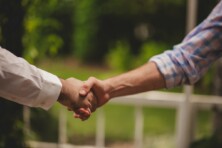Tech measures to control coronavirus
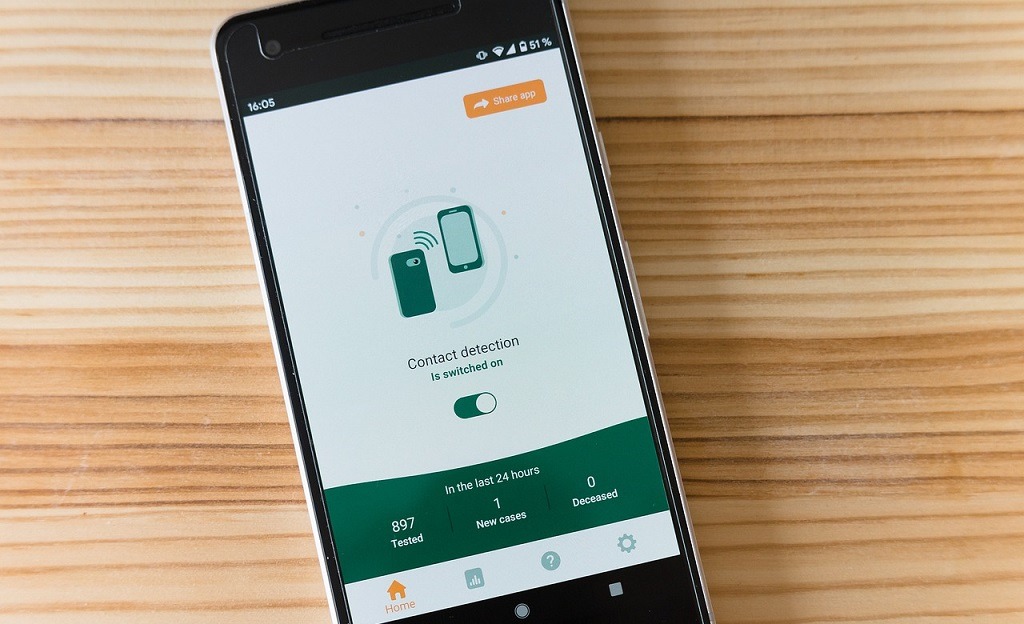
Technology against coronavirus. Source: pixabay.com
The coronavirus pandemic has become a powerful impetus for digitalization and technology development in 2020. The European Commission has called digital technology a key component of collective effort to tackle the virus and support new ways of living and working.
In today’s article, PaySpace Magazine shares a look at useful apps that help governments all around the world to control the spread of mass disease.
China
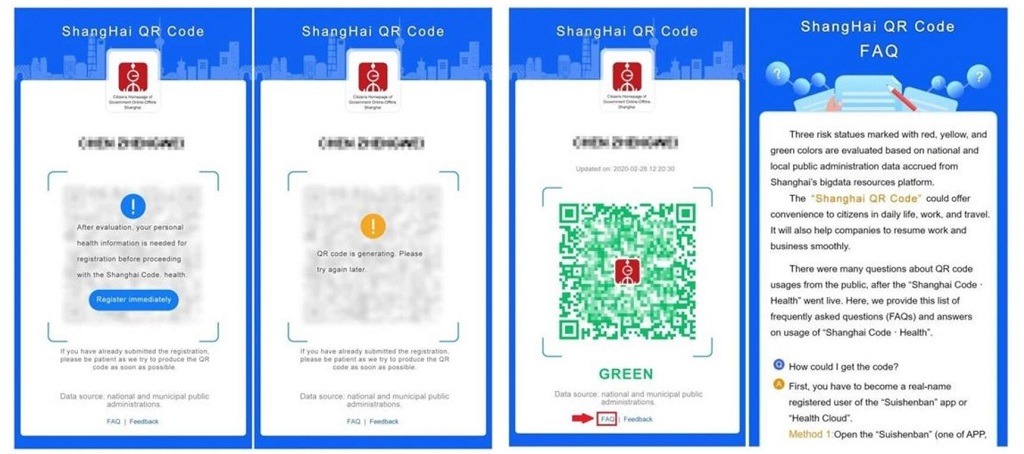
Source: isoe.usst.edu.cn
The government of the People’s Republic of China was probably the first state which introduced its ‘coronavirus’ app. Developed by Shanghai Big Data Center, a contact tracing digital solution called Suishenma can be used by people from Hong Kong, Macao, Taiwan of China, and foreigners.
To start using Suishenma, an individual needs to complete a real-name authentication via Alipay or a direct registration in the app. The service requires personal data, including contact and health information.
After verification of the provided data, each user gets a red, yellow, or green QR code. The yellow ‘health’ code means that such a person has to self-isolate for 7 days, the red one requires people to stay at home for 2 weeks. The green code allows a person to travel without any restrictions.
The QR codes can also serve as a tracker for people’s movements in public places, as residents have their health codes scanned as they enter transport, shops, or venues.
New Zealand
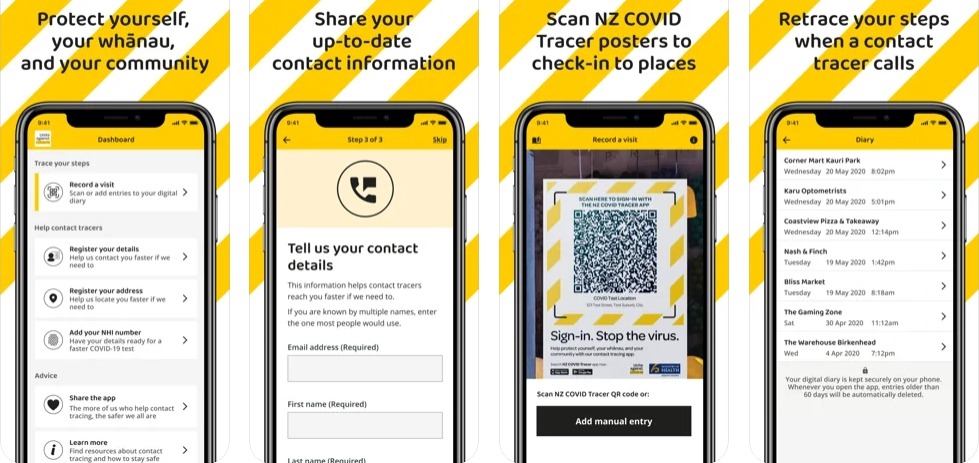
Source: apps.apple.com
This May, the New Zealand Ministry of Health released a mobile contact tracing application NZ COVID Tracer. Unlike the Chinese app, users do not scan their health codes, but only the QR codes of public places they visit. In the event of an outbreak, authorities can track the chain of transmission of the coronavirus and warn citizens about possible infection.
India
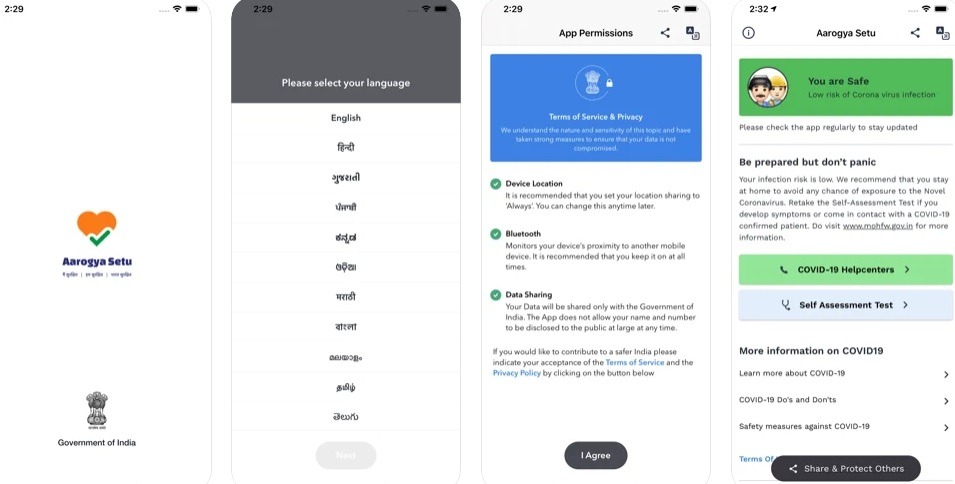
Source: apps.apple.com
India, which is currently in second place for COVID-19 cases, released its Aarogya Setu or “Health Bridge” app back in April. It allows citizens to track their social contacts by using Bluetooth and GPS technologies. If the user interacts with an infected person, he will receive an in-app notification. The application supports 12 languages and available on Android, iOS, and KaiOS platforms.
Aarogya Setu also provides instruction on how to self-isolate, information on the symptoms of coronavirus, and allows people to contact one of the COVID-19 support centers for getting help. The Indian “Health Bridge” has become one of the most popular ‘coronavirus’ apps with over 114 million users.
USA
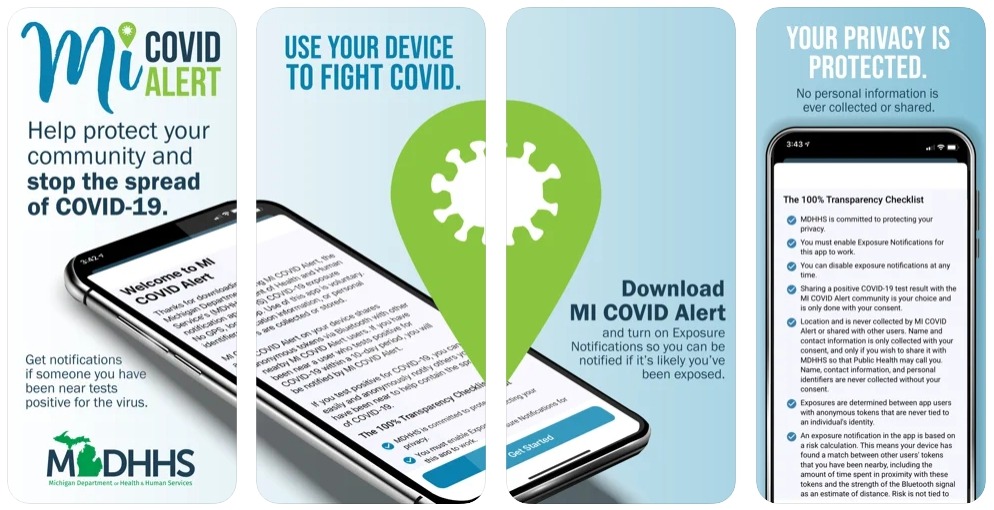
Source: apps.apple.com
The United States, which leads the world in the number of coronavirus’ cases, has a few COVID apps released in different states, including Virginia, New York, North Carolina, and Pennsylvania.
The most recent service called MI COVID Alert was launched by The Michigan Department of Health and Human Services. The release took place earlier than the scheduled date (on November 23) due to the successful completion of pilot testing within the Michigan State University campus community.
MI COVID Alert uses Bluetooth technology to detect nearby phones of other app users and notifies individuals when they may have been exposed to someone who has tested positive for the virus.
Michigan’s app uses Exposure Notification System (ENS) created by Apple and Google which allows phones to exchange anonymous identifiers using Bluetooth. Such IDs contain information about how close one user of the application was next to another and how long such contact lasted. If the contact with an infected person took place for 15 minutes at a distance of less than 1.8 meters, the user will get in-app notification. The anonymous IDs are codes made up of letters and numbers and can’t be used to identify users.
South Africa
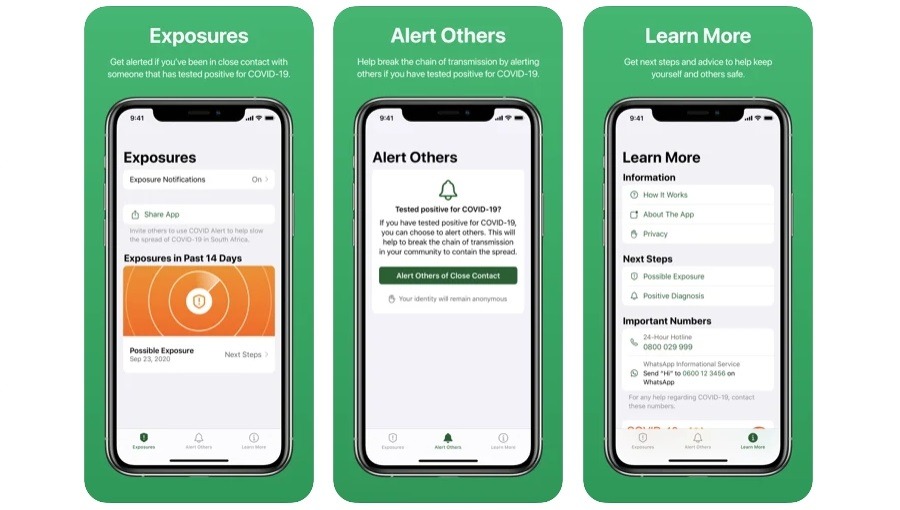
Source: apps.apple.com
COVID ALERT SA, an application developed for citizens of the Republic of South Africa, works in a similar way as MI COVID Alert. It also uses Bluetooth to send notifications in case of infection risk. The application provides information on the symptoms of COVID-19 and measures to prevent the spread of pandemic. For instance, the citizens can use COVID ALERT SA to notify the National Department of Health of their positive coronavirus test.
Singapore
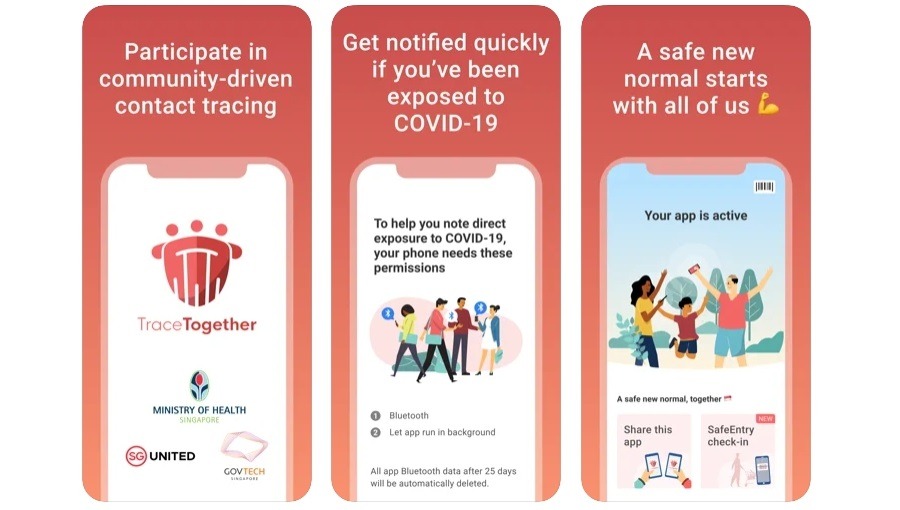
Source: apps.apple.com
Singapore is one of the first states which developed its own ‘coronavirus’ app called TraceTogether. This digital solution uses Bluetooth to track contacts and alert the user in case of suspected infection.
Local authorities also took care of those who do not use a smartphone by providing them with a special token, a free sensor that exchanges data via Bluetooth. The encrypted information is stored on the device until the citizen agrees to share it with the Ministry of Health.
Both the token and the app can be scanned at the entrance of the venues and other public places.
Ukraine
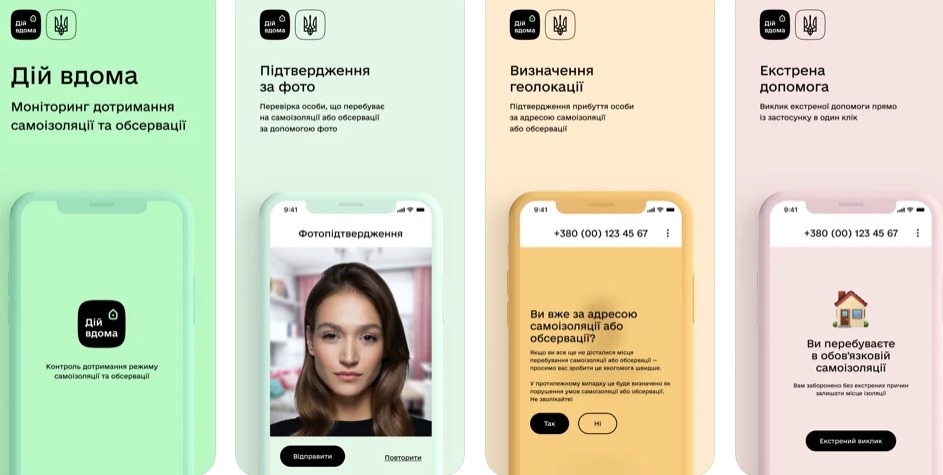
Source: apps.apple.com
In April, the Ministry of Digital Transformation of Ukraine released a mobile app to monitor citizens on self-isolation. The novelty was named “Dii Vdoma” (means “Act at Home” in Ukrainian, later the service was renamed to “Vdoma”). The app is an alternative to the hospitalization in specialized observatories (isolators) for people crossing the Ukrainian state border of Ukraine.
To install the application, an individual needs to scan the QR code on posters placed near Ukrainian passport control zones or download it from the App Store or Play Market.
The challenge for using “Vdoma” by foreigners is that it can be installed and activated only on phones with Ukrainian phone numbers (+380). During the registration, the user will receive an SMS with a confirmation code to activate the app.
After the registration, one needs to allow the application to send push notifications and fill in the residence address for the period of self-isolation.
Upon filling in the data, the application will send a notification asking if a person has already arrived at a place for self-isolation. This notification has to be shown to the officers of the State Border Service. After arriving at the isolation site, the user will be asked to send 3 selfies for identification.
Once the photos are taken, the main application screen will reopen with a self-isolation countdown which starts from 14 days. On the last day of self-isolation, the counter will show “0 days of self-isolation or observation left”. After the expiry of the period of self-isolation, the message “The period of your self-isolation or observation has ended” will appear instead of the counter. Thanks to the recent useful update, the users can now finish self-isolation earlier after receiving the results of PCR analysis (this data will be automatically pulled up from the Center for Public Health of the Ministry of Health).
The user can also get medical help within the app by using the “Emergency” button to call the hotline of the Ministry of Health of Ukraine.
United Kingdom
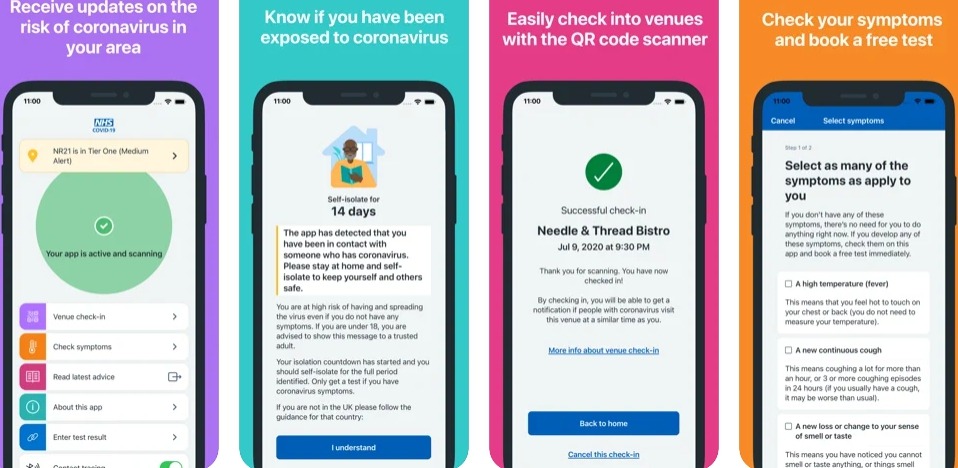
Source: apps.apple.com
The government of the United Kingdom, despite a large number of coronavirus cases, presented its digital solution much later than other countries – at the end of September. The application called NHS COVID-19, whose release date was postponed a few times by the authorities runs on software developed by Apple and Google (which includes APIs and operating system-level technology to assist in enabling contact tracing) and works in a similar way as the New Zealand’s app.
NHS COVID-19 supports 12 languages, allows citizens to track social contacts both automatically by using Bluetooth technology and by scanning QR codes in bars and restaurants. Those Britons who do not use smartphones can simply leave their contact information in a visitors’ book at the entrance to the venues.
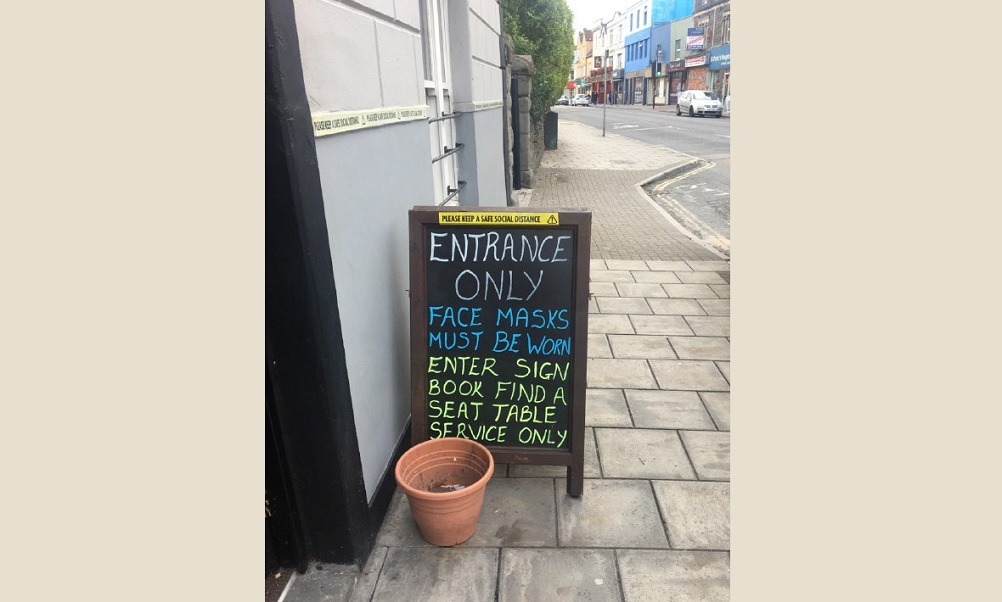
Source: payspacemagazine.com
Also, NHS COVID-19 keeps track of the self-isolation countdown and provides relevant advice. However, unlike in Ukraine, the British authorities do not oblige citizens and tourists to use the application during self-isolation (PaySpace Magazine’s editor has witnessed how Ukrainian border guards demanded travelers from the countries in the “red” zone to download and activate the Ukrainian app for self-isolation). The users can also check within the app if they have coronavirus symptoms and order a test if they need to.
NHS COVID-19 is available in England, Wales, Scotland, Northern Ireland, Jersey, and Gibraltar.
UAE
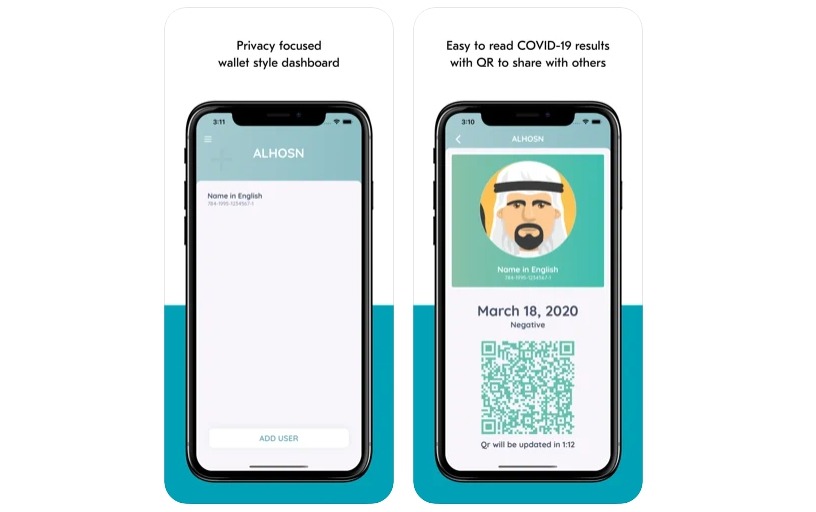
ALHOSN UAE app. Source: apps.apple.com
The United Arab Emirates, like the United States, has developed several applications to control the spread of coronavirus. One of these solutions, TraceCovid, uses Secure Tracing Identifier technology to exchange and store data with other applications. In fact, it works exactly like other previously mentioned contact tracing apps.
Another digital solution ALHOSN UAE, besides tracking, also allows individuals to receive COVID-19 test results on their smartphones.
Another app called StayHome is used for self-isolation. In general, it works the same way as “Vdoma” – the user needs to periodically send a selfie to confirm his location. However, unlike the Ukrainian app, StayHome requests access not only to the camera and location, but also to multimedia, audio, and calls.
Brazil
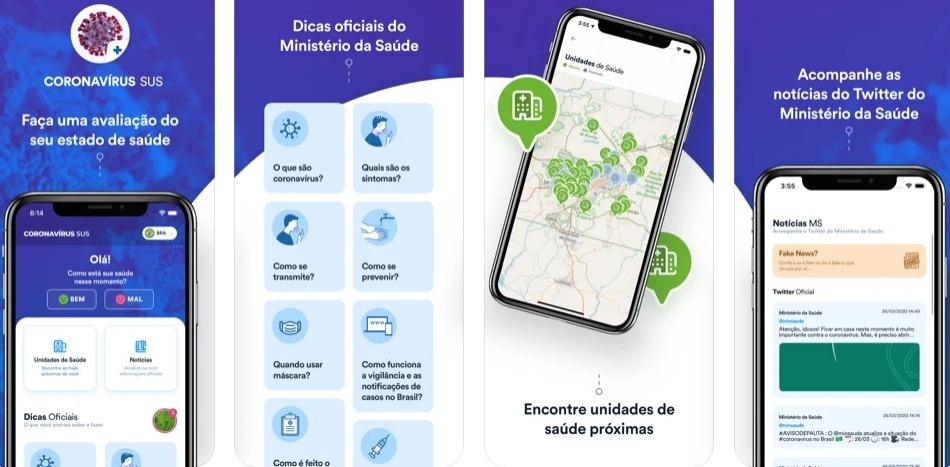
Coronavírus – SUS app. Source: apps.apple.com
The Brazilian authorities have released an app to help indigenous people in the largest socio-geographic division Legal Amazon. The service, called Alerta Indígena COVID-19 (Indigenous Alert COVID-19), pulls up regularly updated data from the Ministry of Health on the pandemic situation in cities within 100 km of the region’s indigenous habitats. According to the Amazon Environmental Research Institute (IPAM), this information helps reduce the risk of infection between villages and cities in case locals need to travel to the nearest municipal center. The app also allows natives referred by COIAB to register new cases of COVID-19 among the people in the nine states of the Amazon.
Besides the Indigenous Alert COVID-19, Brazilians can also use Coronavírus – SUS app to check themselves for coronavirus symptoms, indicate nearby health facilities, etc.
SEE ALSO:




